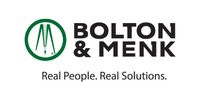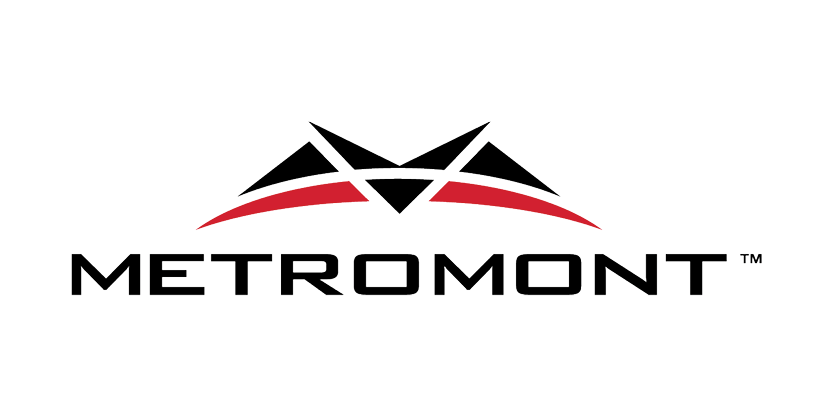CLT Council Committees Meet Next Monday - On June 5th, Charlotte City Council Committees will meet as they always do on the first Monday of each month. Next week's meetings will be of particular interest as the next wave of UDO text amendments will likely be discussed in the Transportation, Planning, & Development Committee. A final resolution on the Eastland Project may also be in the offing in the Economic Development Committee.
Check this link later in the week to view the agendas.
Charlotte-Mecklenburg Stormwater Services is currently in the process of revising the BMP (Best Management Practices) Design Manual
Originally published on May 25, 2023, by Marc Selvitelli, CAE for NAIOP.
Today the Supreme Court issued a unanimous decision in Sackett v. EPA, a case involving the jurisdiction of the Clean Water Act and the definition of “Waters of the United States” (WOTUS), and an issue on which NAIOP has been active on behalf of commercial real estate. In a victory for NAIOP members and the CRE industry, the Court ruled that the Clean Water Act extends only to wetlands that are “as a practical matter indistinguishable from waters of the United States” and that have a continuous surface connection with that water.
For many years, NAIOP has advocated for commonsense regulation to protect our nation’s wetlands that is clear, increases predictability and consistency in EPA and Army Corps of Engineers wetlands decision-making, and reduces unnecessary permitting delays. Our most recent comments on the Biden administration’s WOTUS rule reflected this approach. Today’s Supreme Court decision finally clarifies the legal test needed to determine whether a federal wetlands permit is required for a development project. This will go a long way to reducing the uncertainty and added costs of delay that were the result of the legal ambiguity that existed.
The Biden WOTUS rule had been suspended in 26 states as a result of legal challenges. Today’s Supreme Court ruling will most likely force changes to the Biden administration’s regulation to ensure its application is consistent with the decision. NAIOP members should rest assured that we will continue to work with federal policymakers as regulations governing our industry are developed.
As always, please feel free to ask any questions about this or any of our advocacy positions.
Originally published on May 23, 2023, by Shawn Moura Ph.D., for NAIOP.
NAIOP National Forums members attending last week’s annual Symposium had the opportunity to tour several projects in the office and life science markets in East Cambridge, Somerville and the greater Boston market. The tour, led by Rob Dickey, Executive Vice President at Leggat McCall Properties (LMP), included site visits to two mixed-use projects that are currently under development.
East Cambridge
East Cambridge is a central hub for life science and technology firms in the Boston area, with 8.0 million square feet of office space and 8.6 million square feet of lab space, and an additional 3.6 million square feet of office and lab space currently under development. The market enjoys low direct vacancy rates (2.9% for office, 1.8% for lab) and high rents ($102 gross per square foot asking rent for office space, $116 triple net lease asking rent for lab space, according to JLL). Prominent organizations in the area include MIT, Sanofi, Moderna, Novartis, Eli Lilly, Google, Apple, IBM, Microsoft and Biogen.
Read More
Originally published on May 19, 2023, by Kathryn Hamilton, CAE for NAIOP.
The Boston seaport has been continually reshaped since the 1800s, devolving from what was once a thriving area of commerce to acres of muddy parking lots and a few restaurants. Today, it is being reimagined again in a rapid and remarkable transformation that includes soaring office and lab towers, high-end residential, and all the retail services you could imagine.
Members of NAIOP’s National Forums toured two components of the seaport during their annual Symposium this week in Boston, hearing from the developers, investors and advisors shaping the site today.
Boston Global Investors is a leading partner and developer of Seaport Square, a 6.3 million square foot urban revitalization and the city’s largest master-planned community to date. Kevin Benedix, chief operating officer and chief financial officer, walked Forums members through the history of the project, its inspiration, and how it’s continued to evolve.
Read More
Originally published on May 19, 2023, by Kathryn Hamilton, CAE for NAIOP.
Opening with an image of a sailboat, National Forums Symposium keynote Heidi Learner said the photo captures the whipsaw tone of economic news today, with sudden shifts in unexpected directions.
Learner is head of innovation with Altus Labs and spoke to 800+ NAIOP National Forums members during their annual meeting this week in Boston. Here are some key takeaways from her remarks:
- Unemployment has hit 50-year lows, but payroll additions are slowing and we’re not creating jobs at the same pace. Inflation remains high but has dropped from the 9.1% peak seen last summer.
- Real (inflation-adjusted) spending in April 2020 was 18% lower than in February 2020; but by March 2021, it had returned to February’s level. The outlook for spending is key because consumer spending is approximately two-thirds of total economic output.
Read More
Originally published on May 11, 2023, by Brielle Scott for NAIOP.
California’s Title 24, the state’s energy code, has required solar for all low-rise multifamily projects since 2016, but new provisions have gone into effect this year, impacting any projects permitted since Jan. 1, 2023.
To help navigate the regulatory landscape and explain how solar and energy storage can benefit building owners and developers, Rachel McCafferty, director of business development for CalSolar Inc., shared her expertise during a NAIOP webinar on the topic.
“The solar requirement has been extended to not just multifamily projects but to all commercial and industrial new construction in California,” McCafferty explained.
Read More
Originally published on May 19, 2023, by Kathryn Hamilton for NAIOP.
The Boston seaport has been continually reshaped since the 1800s, devolving from what was once a thriving area of commerce to acres of muddy parking lots and a few restaurants. Today, it is being reimagined again in a rapid and remarkable transformation that includes soaring office and lab towers, high-end residential, and all the retail services you could imagine.
Members of NAIOP’s National Forums toured two components of the seaport during their annual Symposium this week in Boston, hearing from the developers, investors and advisors shaping the site today.
Boston Global Investors is a leading partner and developer of Seaport Square, a 6.3 million square foot urban revitalization and the city’s largest master-planned community to date. Kevin Benedix, chief operating officer and chief financial officer, walked Forums members through the history of the project, its inspiration, and how it’s continued to evolve.
Read More
Originally published on May 19, 2023, by Kathryn Hamilton for NAIOP.
Opening with an image of a sailboat, National Forums Symposium keynote Heidi Learner said the photo captures the whipsaw tone of economic news today, with sudden shifts in unexpected directions.
Learner is head of innovation with Altus Labs and spoke to 800+ NAIOP National Forums members this week during their annual meeting in Boston. Here are some key takeaways from her remarks:
- Unemployment has hit 50-year lows, but payroll additions are slowing and we’re not creating jobs at the same pace. Inflation remains high but has dropped from the 9.1% peak seen last summer.
- Real (inflation-adjusted) spending in April 2020 was 18% lower than in February 2020; but by March 2021, it had returned to February’s level. The outlook for spending is key because consumer spending is approximately two-thirds of total economic output.
Read More
Originally published by Adam Roth for the Spring 2023 Issue of NAIOP Development Magazine.
The “Rule of 1.5” explains the impact of transportation costs on industrial real estate.
A recent Q&A in the Wall Street Journal with Marie-Christine Lombard, CEO of international freight-forwarding firm Geodis SA, includes a comment that sums up the current state of the global logistics industry: “The entire supply chain is being rethought and recalibrated and re-costed.”
Lombard is correct. Risk is being assessed differently and the supply chain is changing, which means industrial real estate will follow.
For example, when transportation costs 10 times more than rent, transportation will dictate site selection. It is far and away the biggest determining factor that goes into where companies locate industrial real estate. Specifically, there is a concept called the “Rule of 1.5,” which is defined as whatever affects transportation will impact industrial real estate a year and a half later.
Read More
Originally published by Chris Lee for the Spring 2023 of NAIOP Development Magazine.
The commercial real estate industry is facing many challenges as it moves into 2023. Amid rising interest rates, the lingering impacts of COVID, high levels of inflation, a recessionary economy, shifting capital markets, technological advancements, the Great Resignation, quiet quitting and demographic transitions, one element remains clear and constant — talent management. The real estate industry can’t operate and deliver successful outcomes without exceptional talent and leadership. However, those two factors also come with rapidly rising compensation and retention challenges.
Several recent CEL & Associates post-COVID surveys found that rewarding and retaining talent has become the No. 3 or No. 4 priority for real estate CEOs and boards of directors. Exceptional talent and HIPOs (high-potential employees) are difficult to find and even more challenging to retain without a robust talent-management strategy, and competitive compensation and long-term incentive plans. Talent comprises 65% to 70% or more of most real estate firms’ operating budgets, yet only 27% of real estate organizations have a competitive, well-thought-out talent-management plan. Only 32% of real estate firms have a formal succession plan for CEO and other C-suite positions. Slightly more than 76% of real estate firms have “concerns” relative to retaining top talent.
Read More
Originally published by Matthew Goelzer and Maribel Barba for the Spring 2023 Issue of NAIOP Development Magazine.
A one-of-a-kind Costco arises in a Mexico City neighborhood.
Imagine playing soccer or shooting hoops on the outskirts of Mexico City while atop a 524,549-square-foot Costco Wholesale project. Built on a landfill, this unique retail warehouse, parking structure and loading bay is almost completely hidden from public view.
In addition to the soccer field and basketball courts, the Costco also houses a children’s roller park and a green roof, which are designed to meld into the neighboring landscapes and serve the community. A pedestrian bridge and walking/running path connect the sports facilities to the adjacent Parque La Mexicana, integrating the new installation with the urban park’s sprawling recreational offerings.
It’s not news that large parcels of developable land can be difficult to come by in dense urban areas. Finding a location in burgeoning Santa Fe, once a sand quarry, then a construction landfill, and now an economic hub dotted with high-rises outside Mexico City, was no small challenge.
Read More
NAIOP of North Carolina Day at the State Capitol Advances Interests of Commercial Real Estate
Members from NAIOP’s three chapters are in Raleigh today to advance the priorities of the commercial real estate development industry in meetings with state lawmakers. The 2023 Legislative Priorities focus on economic development initiatives, tax measures, and regulatory reforms that meet the current and future growth within the state.
A top priority for NAIOP of North Carolina this year is local permit reform legislation that reduces inefficiencies and brings more accountability, consistency, and transparency to the process. The passage of HB 332/SB 275I will achieve this by establishing a 21-day period for a local entity to review an application. If the local permitting entity is unable to meet this timeframe, the applicant may seek approval from a third-party (engineer) or the Department of Insurance. Other elements of the bill include:
- During the 21 days, the local entity shall resolve issues associated with the application and may seek additional information from the applicant.
- If additional information is needed or the application must be resubmitted, the permitting entity has 15 days from receipt of the additional information to issue a permit.
- Upon acceptance of a certified approval of an application, the local government shall have 72 hours to issue the permit and refund all applicable fees.
- Upon permit issuance based on third-party certification, the local government and inspection department are released from any liabilities, responsibilities, or claims arising under this legislation.
NAIOP members are distributing a Permit Reform Flyer during meetings to ensure lawmakers are informed and educated on the significance of this legislation for the industry. The flyer reflects the importance of passing HB 332/SB275 now!
NAIOP’s Day at the State Capitol underscores the importance of NAIOP and its members remaining engaged at every level of government to ensure the interests of commercial real estate are considered during the policymaking process.Originally published on April 28, 2023, by Marie Ruff for NAIOP.
There is no one path to commercial real estate development, but for Gregory Boler Jr., a recipient of the 2022 Developing Leaders Award, his career journey started with a mechanical engineering degree at Georgia State University. JLL’s Project and Development Services (PDS) Group interviewed Boler as part of an effort to recruit diverse entry-level talent in technical majors from historically black colleges and universities (HBCUs). He was one of four students selected and began his career working for JLL’s PDS Group in Atlanta.
“This was the only year that JLL’s PDS vertical recruited nationals at HBCUs, for which I’m grateful because I cannot imagine doing anything else,” Boler said.
Boler has a dozen years of experience in acquisitions, development, construction, leasing, asset management, and disposition. As managing director, of east region investments, Bridge Logistics Properties, his roles include sourcing and executing existing industrial acquisitions and new industrial developments. He currently manages several team members across the East Coast; his region stretches from Georgia to Pennsylvania and into New Jersey.
Read More
Mortgage borrowers with good credit may face higher costs under a new plan from federal mortgage associations Fannie Mae and Freddie Mac. The firms have released a new Loan–Level Price Adjustment (LLPA) Matrix for loans sold to them after May 1, 2023. Under the new matrix, borrowers with high credit scores will face higher mortgage fees than before and those with lower credit scores will face lower fees.
- Under the new rules, high-credit buyers with scores ranging from 680 to above 780 will see a spike in their mortgage costs – with applicants who place 15% to 20% down payment experiencing the biggest increase in fees.
- LLPAs are upfront fees based on factors such as a borrower's credit score and the size of their down payment. The fees are typically converted into percentage points that alter the buyer's mortgage rate.
- Under the revised LLPA pricing structure, a home buyer with a 740 FICO credit score and a 15% to 20% down payment will face a 1% surcharge – an increase of 0.750% compared to the old fee of just 0.250%.
- Meanwhile, buyers with credit scores of 679 or lower will have their fees slashed, resulting in more favorable mortgage rates. For example, a buyer with a 620 FICO credit score with a down payment of 5% or less gets a 1.75% fee discount – a decrease from the old fee rate of 3.50% for that bracket.
Learn More About the Global Impact of CLT and American Airlines as you listen to Tracy Montross, Regional Director of Government Affairs for American Airlines
While interviewing Tracy Montross, we discovered some amazing facts about her, and the impact this pivotal airport and airline has on the health of our entire region. For instance, did you know that at one point during the pandemic, our own Charlotte Douglas International Airport (CLT) was the busiest terminal in the world? It’s a testament to the airline that has helped put us on the world map in terms of attracting, maintaining, and growing business opportunities around the greater Piedmont region.
Charlotte, (or CLT which represents 5% of the entire GDP for the state of North Carolina) is fortunate to serve as America’s second-largest hub, connecting us to the world with an average of 560 daily flights, more than 170 destinations, and 23 countries, serving more than 42 million travelers in 2022. Its regional impact on our economy, huge employment figures, and the way it supports our ability to attract world businesses; this is truly a subject REBIC wants you to know about!
Listen to this very entertaining podcast, here.
Since that time, we have had an opportunity to talk to a lot of folks who agree that we should see if we can make it work.
One architectural firm in particular, Gensler, has put much effort into the concept. Click the links below to learn more about how these ideas could become a reality.
- Gensler Blog - What We Learned
- Gensler Blog - Converting Class C Office Space
- Gensler Webinar
- Calculator Presentation
Originally published on April 20, 2023, by Gary Tasman for NAIOP.
If you’ve ever attended a ceremonial groundbreaking for a school, restaurant, corporate headquarters, or other new building, you understand the symbolism of that first turn of the dirt. The groundbreaking ceremony signifies the physical start of a construction project. In most cases, however, months or even years have already been spent preparing the land for future growth, as planners and developers work behind the scenes to make the property “shovel-ready.”
Attempting to market a property that is not shovel-ready can be a significant barrier to making a commercial property sale. In fact, it’s hindered some significant transactions where our company is based in Southwest Florida. But what does it mean to have a shovel-ready property, and why is it so important?
What Does Shovel Ready Mean?
The term “shovel ready” became popular during the Great Recession as part of the American Recovery and Reinvestment Act of 2009. The legislation placed funding priority on projects that could begin construction rapidly, in hopes of jumpstarting the economy by providing investment and employment opportunities quickly. The phrase became an important buzzword, and an even more important strategy, in commercial real estate.
Read More
Debt Ceiling Debate in Washington
Originally published on April 18, 2023, by Eric Schmutz for NAIOP.
Congress returned this week from its Easter and Passover recess facing what promises to be a heated debate over raising the nation’s borrowing limit. On Monday, House Speaker Kevin McCarthy visited Wall Street to debut the latest House Republican proposal to raise the debt ceiling. In his speech, McCarthy stated that in the coming weeks, the House would approve a one-year increase in the debt limit that will include a reduction in discretionary spending to 2022 levels while limiting future increases to 1% annually over the next 10 years.
This is the Republicans’ first proposal to raise the debt limit since U.S. Treasury Secretary Janet Yellen informed Congress on Jan. 13 that the federal government would exceed its borrowing authority of $31.38 trillion a week later, on Jan. 19. If McCarthy is able to get his proposal approved by the House, it will show an unprecedented level of Republican unity and will significantly strengthen his hand in negotiations with President Joe Biden, who demanded a “clean” debt ceiling increase during their Feb. 1 meeting – the only time the two have met in person on the topic.












































